Reading 35mmc can be dangerous to the pocketbook and can lead to GAS (no, not flatulence, but Gear Acquisition Syndrome). I read several glowing articles about Voigtländer cameras and their precision and optical excellence. I never knew much about the company because, as far as I recall, no family members or friends had any of their products. For the last couple of years, I almost stopped using my digital Fuji and have been using 35mm film instead. And although I have a Leica IIIC, Leica M2, Yashica Electro 35CC, and Pentax Spotmatic at home, one can never have too many classic 35mm cameras at home (right??).
So, I did some checking on eBay (which can be dangerous!) and grabbed a handsome little Vito BL for all of $34. Most these old Voigtländers sell for remarkably low prices (the exceptions are the models with the 50mm Ultron lenses and the bodies with a rangefinder). I suppose the lack of light meters on many models and the complete manual characteristics turn off many potential buyers. However, many of the 1970s Japanese rangefinders are escalating in price as of 2019, and they are largely manual operation, too, so I don’t know.
But which model should I buy? There seem to be a baffling number of models from Voigtländer and it took a bit of reading to sort them out. Briefly:
- Folding models: Vito I, II, IIa, and III (see Hamish Gill’s Vito II review).
- Rigid body 1950s models: Vito B, BL, and BR (see Hamish Gill’s article on the B, Richard Williams’ 5-frames or John’s Cameras)
- Rigid body with light meter visible in the finder: Vitomatic I, II, Ia, IIa, Ib, IIb, IIIb (see Nigel Haycock’s Vitomatic II review)
- Rigid body 1960s with cost-cutting and some plastic: Vito C, CL, CLR, CD, Automatic R (see Julian Higgs CLR 5-frames)
The Vito BL
My BL came in a well-padded box and looked clean and rather cute (cameras are cute?). The Vito is a strong German precision device from the end of the era when German camera manufacturers ruled the commercial market and just as the Japanese companies were surging forward. It has that look of semi-hand craftsmanship when every part was assembled by a technician and checked to be sure everything was perfect before being shipped off to the sales channels. I have read that every Voigtländer camera (up through the 1960s?) was tested with film before release. This seems extreme, but Franke & Heidecke (Rollei) did the same film verification with their cameras in the 1950s and 1960s, and both Rollei and Voigtländer were located in the town of Braunschweig. It would not surprise me that manufacturing and quality-control practices carried over between companies.
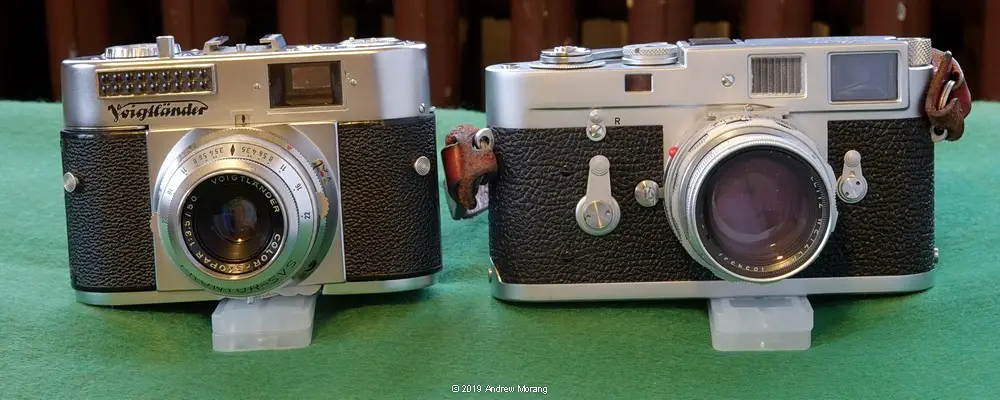
As you can see, the Vito BL is a bit taller then my Leica M2 but not as wide. Some people prefer the Vito B with the smaller version of the viewfinder, which is not as tall as the BL and the later B with big finder. Note that the Vito does not have a rangefinder; the finder is for framing only.
Also notice how much larger the front objective is on the Leica 50mm ƒ/2.0 Summicron compared to the Vito’s ƒ/3.5 Color-Skopar. The Vito uses push-on 32mm filters. I always used filter size as a quick way to gauge lens size. Leica’s 39mm filters meant a compact lens. Pentax’s 49mm (for the 1970s thread-mount Takumar lenses) was mid-size. Nikon’s 52mm was getting up there. Leica’s latest 50mm ƒ/1.4 lens for their SL camera costs $5,295 and requires an 82mm filter! Hmmm, lenses have grown in girth like the US population.
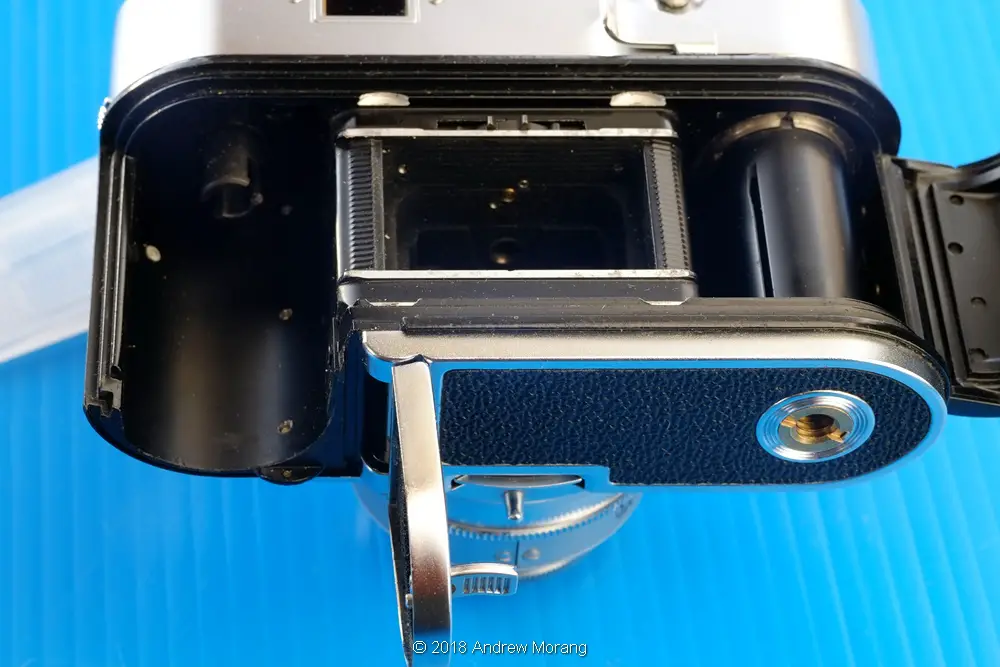
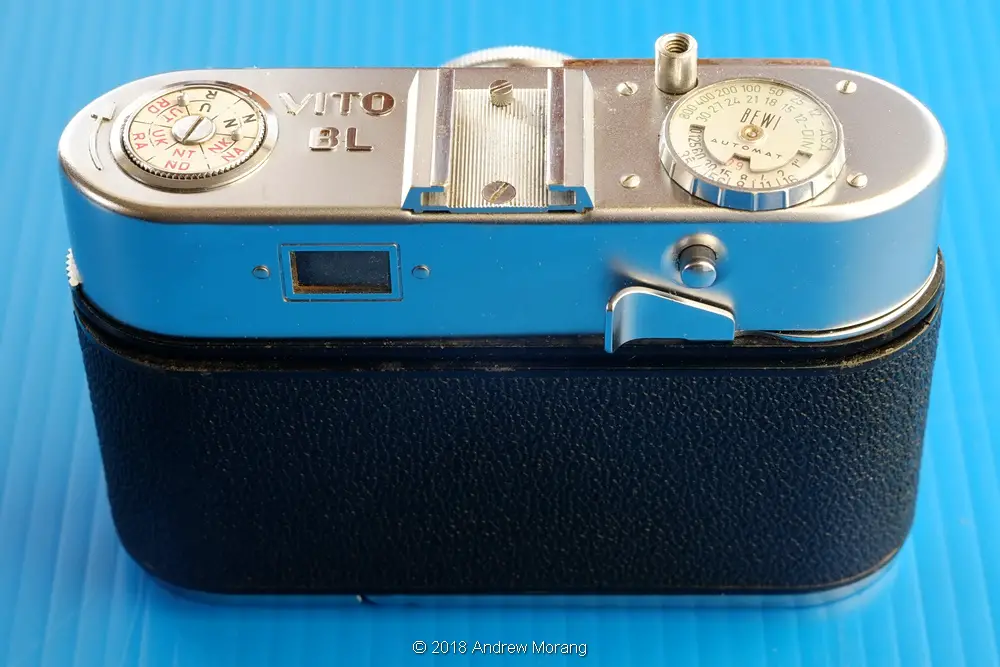
I was pleased by the jewel-like machining and feeling of precision. The bottom opens with a rather complicated bottom hatch, which allows for easy film-loading.
Checking the shutter is clumsy because a film must be loaded for the shutter to operate. The reason can be seen in the photograph above. There is a toothed wheel immediately above the film gate. The film must engage the wheel and be advanced by the film-wind lever. Some web pages claim the wheel cocks the shutter. But I am dubious of this because on my Vito BL, I can barely turn the wheel by hand. If a film did all this work, the sprockets would tear. I think the wheel sets the film counter and the wind lever is linked mechanically. I may be wrong, and have not taken the camera top off to check what is happening in the guts of the machine. Regardless, many eBay sellers believe the shutter is inoperable because they do not know that a film must be loaded, so you can sometimes snag a Vito a low price.
On my Vito BL, I loaded a spare film and exercised the shutter many times on each speed. At first, 1 and ½ sec. were clearly slow, but before too long, they sounded about right. Even more surprising, the self-timer on my camera works properly (about 10 sec. delay).
The Color-Skopar lens
My Vito BL has a 50mm ƒ/3.5 Color-Skopar lens. This is a coated Tessar-type optic with 4 elements in 3 groups. It is unit focus, meaning the entire lens group moves as a rigid unit (as opposed to front element focus). Most folding cameras and some solid body models like the Olympus Trip 35 and the Rollei 35 with Tessar lenses focus by means of moving the front element only. But if the entire lens group is held together rigidly, the optical quality is better over the entire focus range (usually approx. 1 m to infinity). Whether you would see a difference in a normal print is hard to tell. I have friends with the Vito II, and they are thrilled with the performance of their element focus lens.
Tessar lenses were developed by German physicist Paul Rudolph in 1902 for the Zeiss company. The patents lasted for two decades, after which many other companies made their own versions of the Tessar. Examples include the Schneider Xenar, E. Leitz Elmar, Agfa Solinar, Rodenstock Ysar, Kodak Ektar, and KMZ Industar (the Soviets likely were not too concerned with western patent issues). The Tessar was perfect for the early 20th century because it has relatively small glass elements and only 6 air-glass surfaces (see the patent figure below). Therefore, it was relatively free of flare in an era before lens coatings had been developed. The manufacture requires high precision, but the German optical industry was able to achieve this by the early 20th century.
Tessar lenses have a characteristic that is sometimes called edge effect, where density builds up at abrupt feature edges on the negative. This gives the appearance of enhanced sharpness. Wide open, at ƒ/2.8 or ƒ/3.5, the sides of a frame are not too sharp, but stopped down, the scene is uniformly crisp. The lens is not as well corrected as a 6- or 7-element Sonnar- or Summicron-type lens, but those are much more expensive and complicated designs.
Albrecht Wilhelm Tronnier of Voigtlander & Sohn Aktiengesellschaft, Braunschweig, Germany filed the patent for “a new and improved four-lens photographic objective” in 1949. This became the Voigtländer’s famous Color Skopar, used on their Vito cameras and even the expensive Bessamatic. I have read that some photographers consider this the very best of the post-war Tessar derivatives. (Note, Leica’s 1994 version of their 50mm ƒ/2.8 Elmar-M may be more refined, but it benefitted from decades of computer and glass technology).
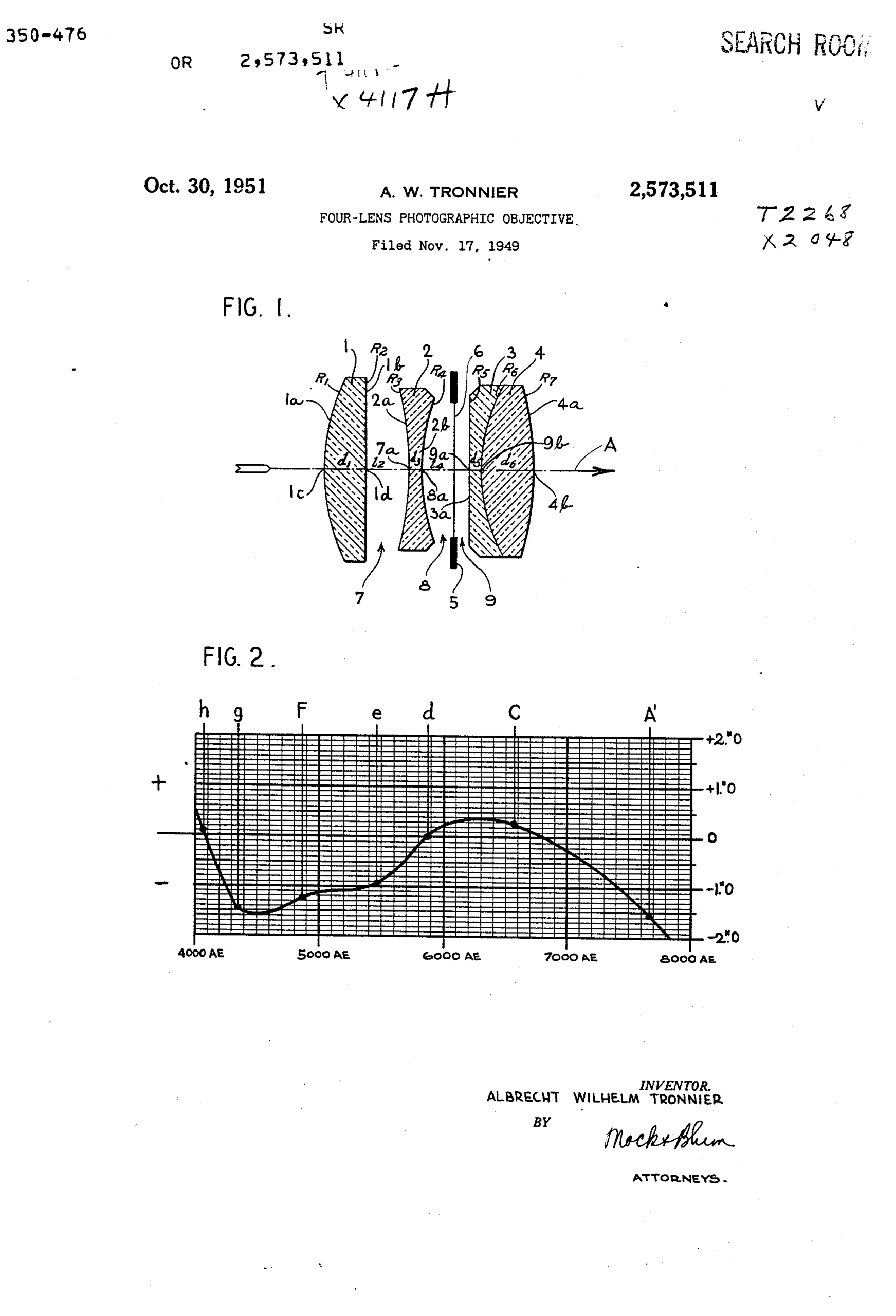
The Vito cameras with light meter were equipped with a shutter that linked the aperture with the shutter speed via the EV system (the red numbers in the photograph). The idea was that once you set the appropriate EV, any combination of shutter speed and aperture would provide the correct exposure. To independently change f-stop or shutter speed, you need to press a tab on the side of the shutter. Many European cameras used this system, with the Hasselblad C lenses being the most familiar. My Gossen Luna Pro Digital and Sekonic 318B light meters have the option to display EV, so they work well with this little Vito BL. Notice that the shutter of the Vito BL has the modern progression of shutter speeds (1, ½, ¼, etc. sec.). My lens has distance marked in feet, so this one was intended for USA, UK, Australia, New Zealand and other non-metric countries.
As I wrote above, these Vitos use a push-on filter with a 32mm diameter mount. I am not sure why the designers did not use screw-in filters, like most other companies. The genuine Voigtländer 32mm filters and hoods are beautifully made and surprisingly expensive. Old-timers may recall that once upon a time, camera stores had drawers full of filters and accessories of various sizes. What happened to all these things? Were they discarded in mass or sold on eBay and now reside forgotten in people’s homes? Regardless, there are two options for filters:
- Buy the genuine items. Beautiful craftsmanship, as expected, and convenient.
- Use a Series adapter with unthreaded series VI filters. Somewhat less convenient.
I already had Leitz Series VI filters, so I bought a push-on adapter. Oddly, the correct Kodak adapter is labeled 31.5mm. It was a bit snug, but I sanded the prongs, which were chrome-plated brass, and the adapter now feels about right. Over time, I will probably buy the genuine Voigtländer filters because I like my camera kits to be complete as intended when they were in their prime, and the filters are compact.
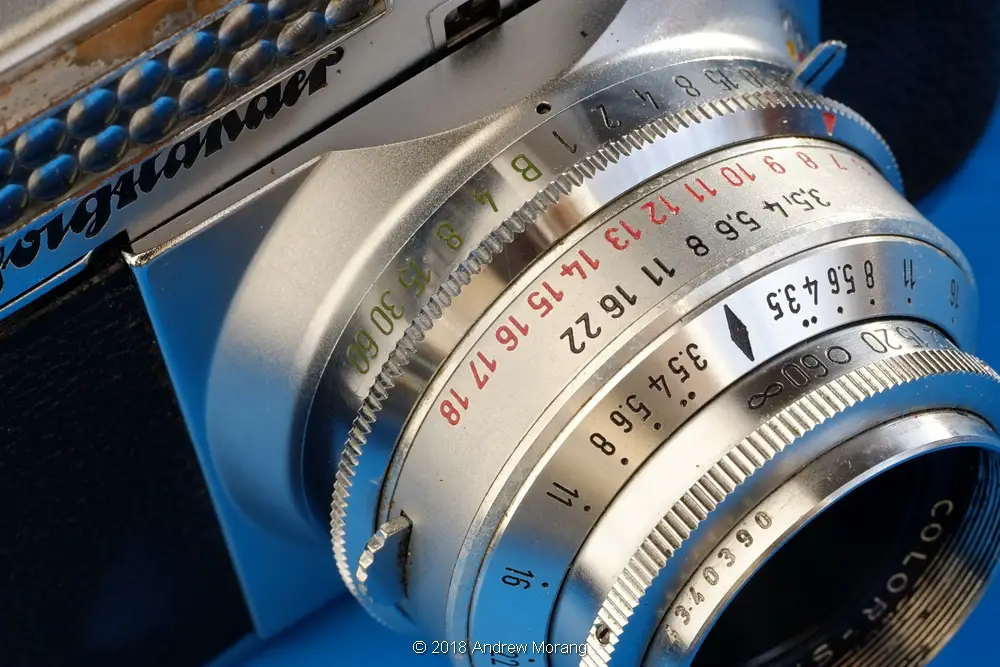
Bewi Light Meter
The Bewi selenium light meter on my Vito BL does react to light, but I am not sure if I can trust it yet. To operate it, I push the button on the back of the top plate for at least a second or two. At mid-light levels, the Bewi and my Luna Pro Digital agree reasonably well. But in bright light, the selenium meter reads about 1 stop brighter, so I need to do more testing. The old selenium cell may simply be non-linear now. Note that with selenium meters, you need to point downward to avoid the readings from being overly influenced by bright sky. Also remember that selenium and silicon cells have different spectral response, so you would not expect them to match perfectly. I have not found a zero adjustment setting on the meter. Might it be underneath the top plate? One advantage of a modern silicon meter is you can meter through a filter and do not need to calculate filter factors in your head (Does 2× mean 1 stop? What is 3×?).
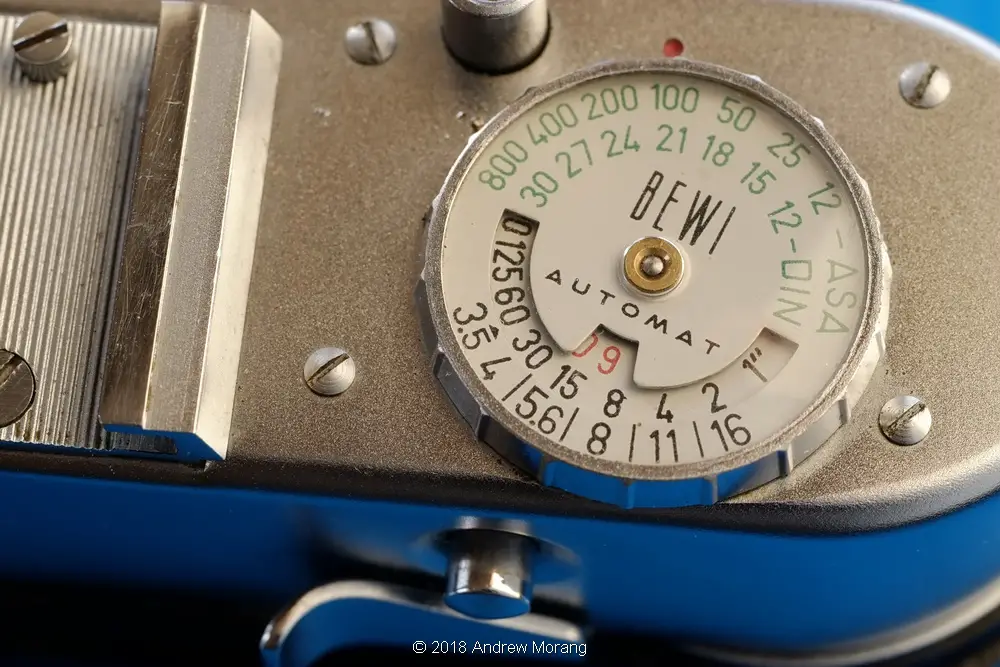
Test No. 1
Gloomy weather, drizzle – what could be more perfect for a new camera and a roll of Ilford Delta 100? I drove to the little town of Port Gibson, Mississippi. For most frames, I set the lens at ƒ/5.6 or ƒ/8.0. Most mid-20th century lenses performed best one or two f-stops closed down from maximum open. Also, to prevent loss of resolution from diffraction, Leica suggested that you should not close down beyond one quarter the focal length. So for a 50mm lens, one quarter would be about ƒ/11. I used a tripod for most scenes and a cable release or the self-timer to eliminate vibration.
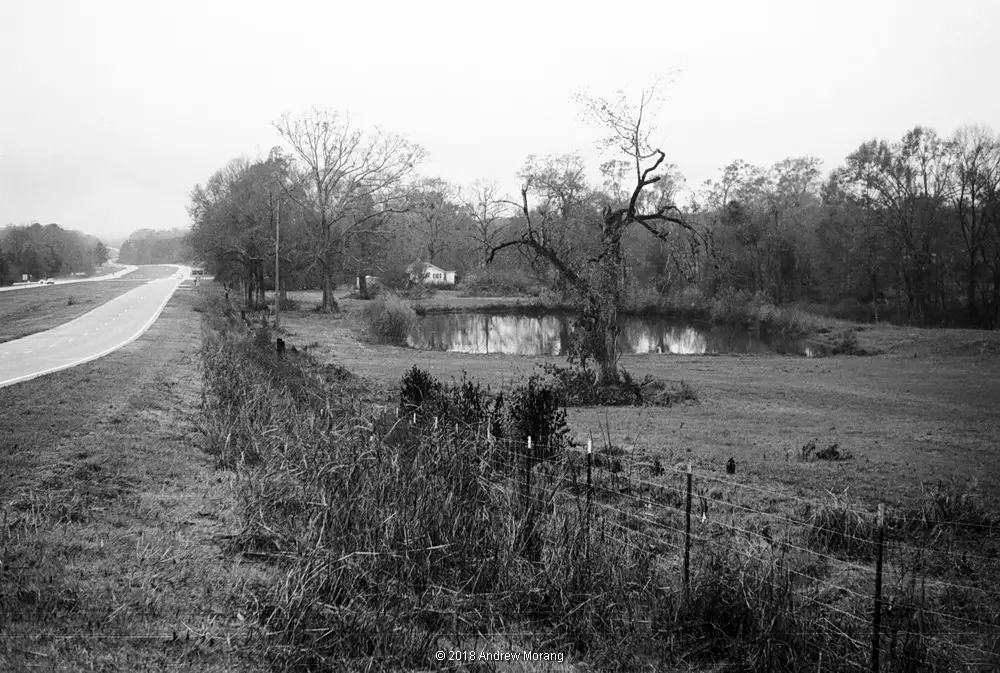
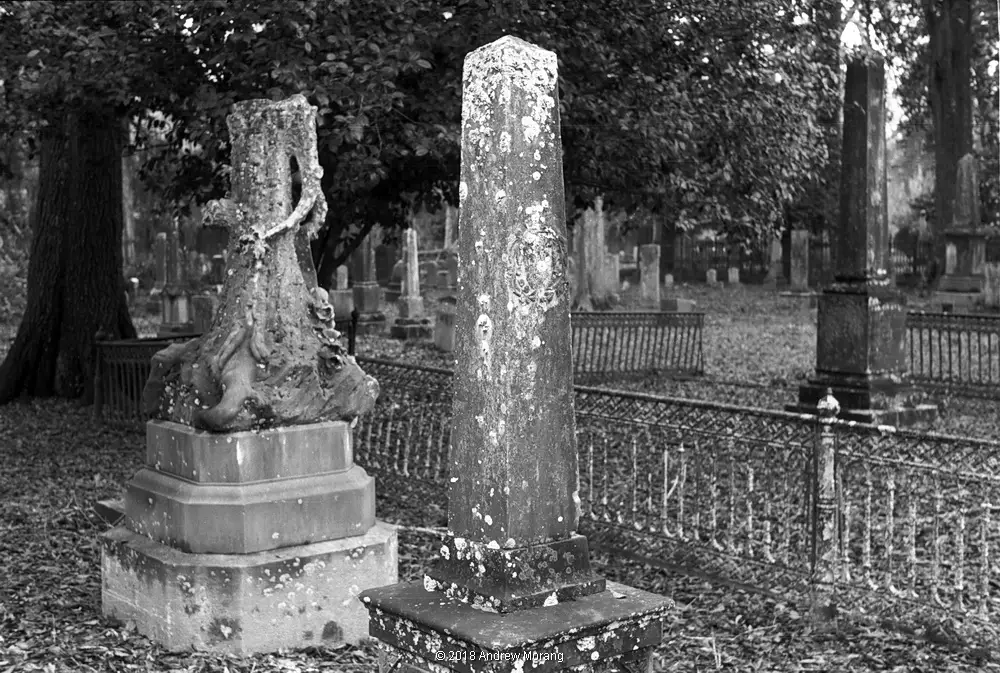
Wintergreen Cemetery looks like a place that time forgot, with huge cedar trees and lichen-encrusted monuments. Confederate soldiers from the Civil War Battle of Port Gibson are interred here. Readers interested in more pictures of Evergreen can click here. For pictures of urban decay in Post Gibson, please click here.
For a continuing test of the Delta 100, I took the Vito on a bicycle ride to the Port of Vicksburg. This is a busy port complex with refineries and cement, gravel, and other bulk commodity companies.

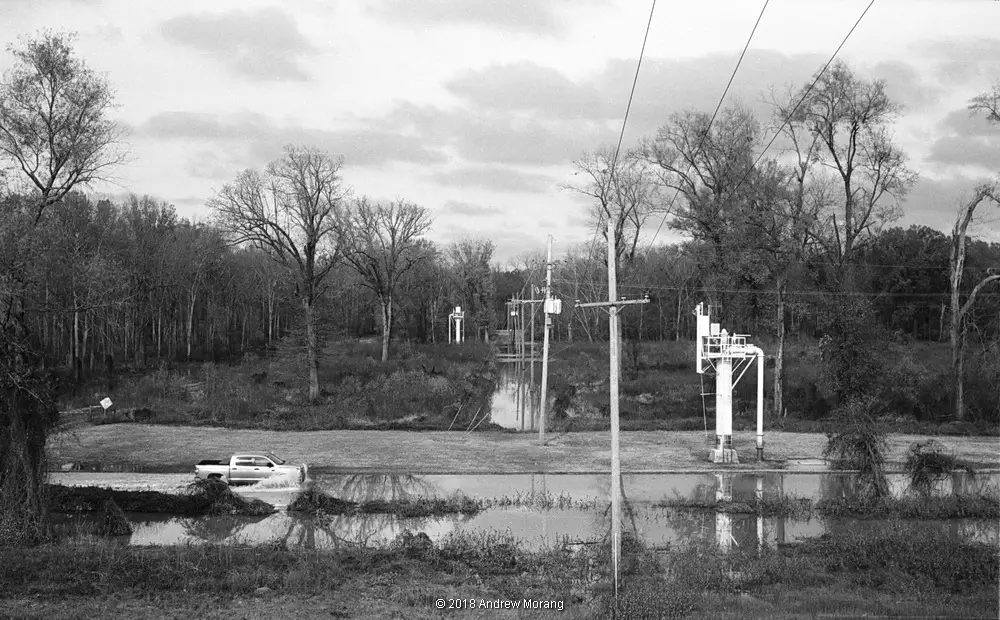
Oh oh, trouble. My first roll had linear scratches on the back, meaning the film base. Checking the pressure plate, I saw small rust pips which projected from the plate. After doing some online research, I worked on the rust with a jewelry rouge cloth and a green pencil eraser. I also treated one larger section of rust with a Q-tip saturated with vinegar. Result: completely smooth and clean. You can test by passing a cotton ball over the surface. If there are irregularities, strands of cotton will be caught.
Test No. 2
I loaded a roll of Kodak Ektar 100 color negative film. This may be the highest resolution C-41 film on the market now. Sadly, I no longer have any of the wonderful Ektar 25, which was spectacularly fine-grained. I drove to an abandoned rubber reclaiming factory on the appropriately-named Rubber Way on an appropriately gloomy day.
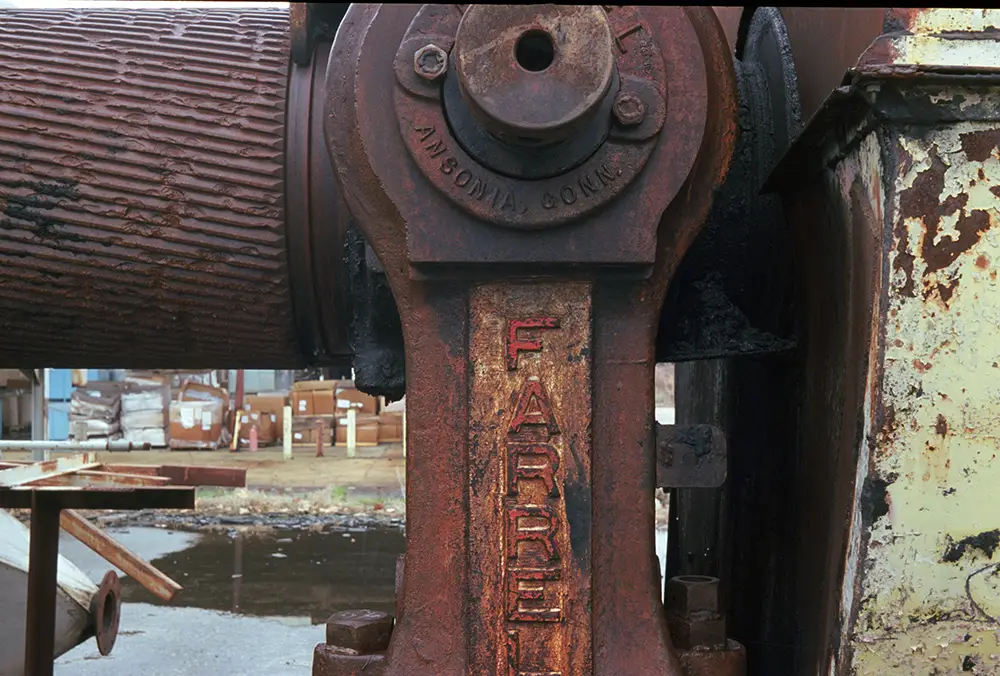
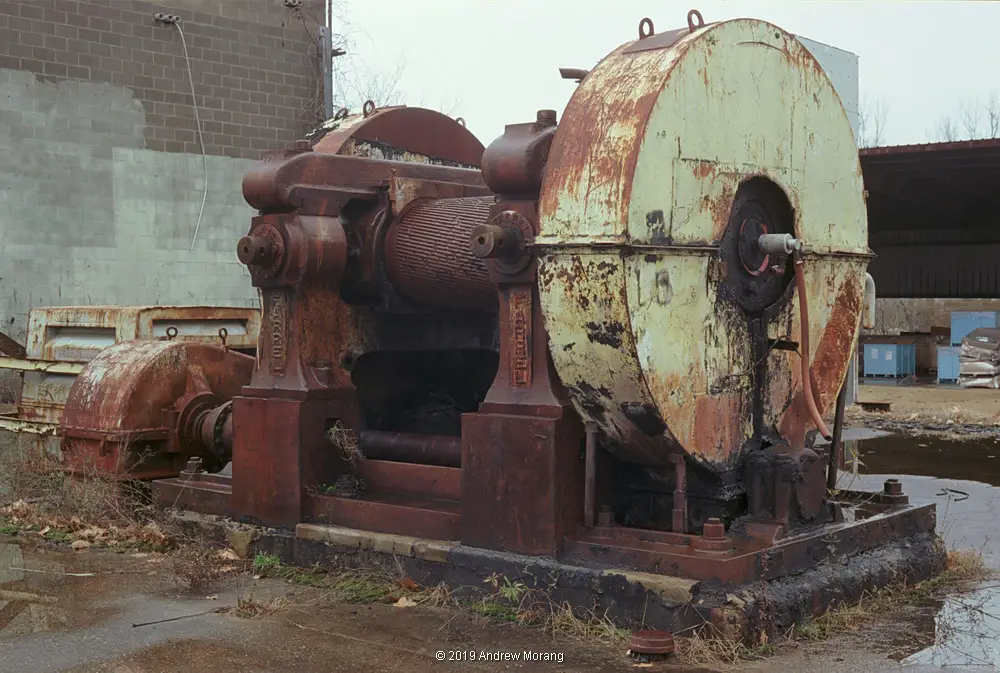
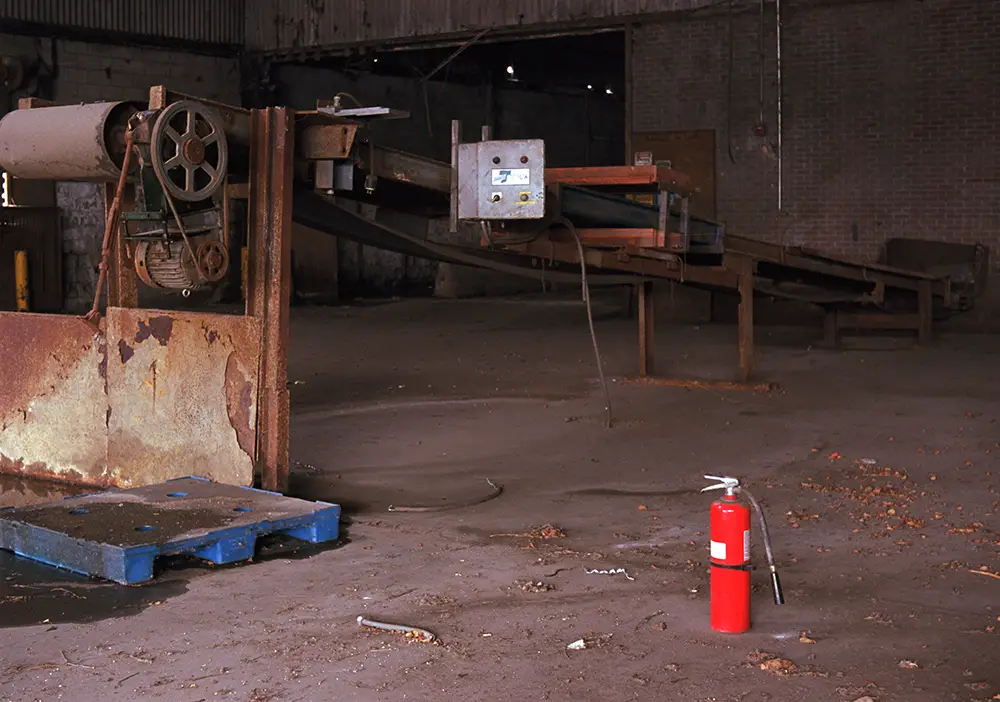
Summary
As you can see from the photographs above, I am thrilled with this little Vito BL. The 50mm ƒ/3.5 Color-Skopar lens is terrific, and the results with black and white film as well as with Ektar 100 look great to me. The camera is a bit fiddly and not at all automatic, but that suits my operating style. Here is a summary of characteristics.
Pros
- Precision machinery from the era of hand-made excellence
- Reasonably compact
- The type of camera that makes you think
- Excellent resolution lens (at least from ƒ/5.6 and smaller), no obvious vignetting, and no obvious barrel or pincushion distortion
- Low vibration leaf shutter
Cons
- No built-in rangefinder; need to estimate distance or use an external rangefinder (or laser distance device)
- Probably need a modern light meter (unless you are sure the selenium unit is correct)
- Accessories such as hoods and filters are expensive
- No interchangeable lenses
- Top shutter speed is 1/300 sec.
- Must press a tab to separate f-stop and shutter speed (locked via EV scale)
In summary, try one. The Vito BL is fun!
Thank you for reading. Keep the faith with chemical-based imaging and buy more film. Record your world. You can keep track of my photographic wanderings at Urban Decay.
Update April 2019: I found a way to attach a strap. The little round studs are almost the same size as the studs on a Hasselblad. I bought stainless steel Hasselblad clips from a Chinese vendor and added some nylon webbing. The clips pop on securely but can be easily removed. Neck strap problem solved.
Share this post:
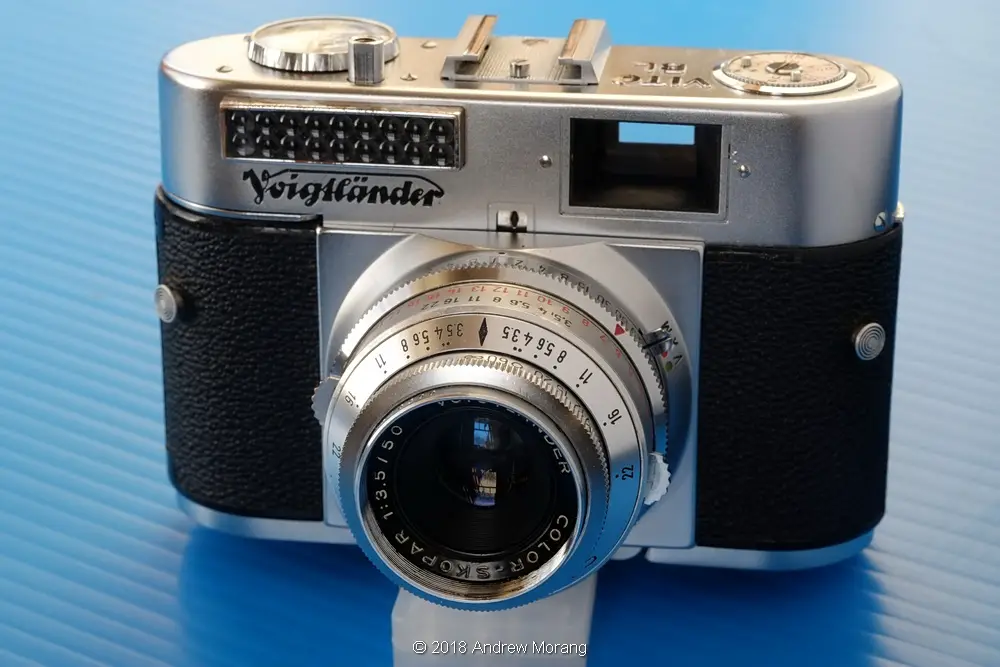








Comments
fp on Voigtländer Vito BL Review – Compact Excellence – by Andrew Morang
Comment posted: 05/04/2019
Comment posted: 05/04/2019
Terry B on Voigtländer Vito BL Review – Compact Excellence – by Andrew Morang
Comment posted: 05/04/2019
These little Voigtlanders are cute, and your use of the word is most apt here. Their compact size, coupled with the rounded ends an surprising heft make them very pleasurable to hold. As you, I do harbour a nagging doubt that front cell focusing is inferior to unit focusing, but providing that the lens and focus scale are in sync (buying old cameras today I've had many that had been "messed with" and I've had to readjust.) I've never been able to categorically confirm one way or another.
Regarding your observation regarding the toothed wheel by the top film guide, this is used to cock the shutter, and for testing a Voigtlander shutter that utilises this mechanism without a film in the camera, one can move this quite easily manually. However, it is spring loaded and is a two-finger or thumb exercise, so if it is released before it locks it will spring back. You mention that yours is hard to rotate and I wonder if this can be related, possibly, to the rust you found on the pressure plate and which may be indicative of water ingress at some stage, or dampness in storage?
Comment posted: 05/04/2019
Comment posted: 05/04/2019
Tobias Eriksson on Voigtländer Vito BL Review – Compact Excellence – by Andrew Morang
Comment posted: 05/04/2019
Mike Connealy on Voigtländer Vito BL Review – Compact Excellence – by Andrew Morang
Comment posted: 05/04/2019
Phil Harrison on Voigtländer Vito BL Review – Compact Excellence – by Andrew Morang
Comment posted: 05/04/2019
Paul Latheron on Voigtländer Vito BL Review – Compact Excellence – by Andrew Morang
Comment posted: 05/04/2019
Nigel Haycock on Voigtländer Vito BL Review – Compact Excellence – by Andrew Morang
Comment posted: 05/04/2019
Looks like you have a nice example there and the pictures are very nice too.
Julian Higgs on Voigtländer Vito BL Review – Compact Excellence – by Andrew Morang
Comment posted: 05/04/2019
I have considered a Vito II but as yet not felt sufficiently lacking in the Voightlander department to justify it with my CLR. (Thanks for the link BTW)
Peter on Voigtländer Vito BL Review – Compact Excellence – by Andrew Morang
Comment posted: 05/04/2019
"Reading 35mmc can be dangerous to the pocketbook and can lead to GAS...' TO TRUE!
Cheyenne Morrison on Voigtländer Vito BL Review – Compact Excellence – by Andrew Morang
Comment posted: 20/05/2019
be covered by A.W.Tronnier's patents, US Pat 2,573,511 2 of 30/10/1951; Fr Pat. 997,736/1949; and the use
of higher refractive index glass lead to reduced astigmatism and spherical aberration. The postwar f3.5 Skopar
was a very desirable item, sold at a very reasonable price at a time when too many German cameras imported
to UK were fitted with 3-glass lenses of big apertures and rather mundane sharpness. As a result the Vito B
won many friends for Voigtländer. The later f2.8 was also very good but did not have quite the same position.
Lens Collectors Vade Mecum
Jerrold Bilmyer on Voigtländer Vito BL Review – Compact Excellence – by Andrew Morang
Comment posted: 18/02/2020
I also enjoy urban exploration, our community has three historic roster buildings, I live in one. There are several nearly abandoned State Mental Hospitals in the area, old mills and ruins. Not to mention a marine graveyard off the Potomac, and of course the tidewater. As Peter commented leads to GAS, already studying for my next Voigtlander. Jerry
Comment posted: 18/02/2020
Dave Miles on Voigtländer Vito BL Review – Compact Excellence – by Andrew Morang
Comment posted: 07/10/2020
The only way to test the camera was to run a film through. I could tell the shutter was firing but wasn't too sure how accurate the speeds were. The light meter doesn't work so I used an app on my phone. I didn't really need it - Ilford FP4 plus, 125 asa and a sunny day. I kept the shutter mostly on 125th and f11.
I used a little rangefinder that slips into the hot shoe. Because most of my shots were landscape I just left the distance on infinity.
I was totally gobsmacked with the results! Quality images, great lens for sure!! I wasn't really expecting any results. The film slipped a couple of times and for some reason missed out a couple of shots. As above, there was a fine scratch across the negatives so I need to look into that. If I could post my results here I would.
Beautiful little camera, small. light and simple to use - and quality results! I'll put a few of the results on my Flickr site (link attached). Dave
Comment posted: 07/10/2020
John C Johnson on Voigtländer Vito BL Review – Compact Excellence – by Andrew Morang
Comment posted: 28/01/2021
Comment posted: 28/01/2021
ANTONIO on Voigtländer Vito BL Review – Compact Excellence – by Andrew Morang
Comment posted: 20/02/2022
Tony Warren on Voigtländer Vito BL Review – Compact Excellence – by Andrew Morang
Comment posted: 21/05/2023
A bit of trivia - Franke and Heidecke worked for Voigtländer before WWI and probably worked on Voigtländer's stereo cameras which have a remarkable similarity with their own, later stereos and, of course, the Rolleiflex line. TLRs are also up there for me (see my homily "The Goldilocks Camera" on Emulsive) as I believe they are for you.
I will tuck away the Leitz diffraction mantra in the things to know box too - not seen that before.
Tony.
Comment posted: 21/05/2023
Gary Smith on Voigtländer Vito BL Review – Compact Excellence – by Andrew Morang
Comment posted: 23/01/2024